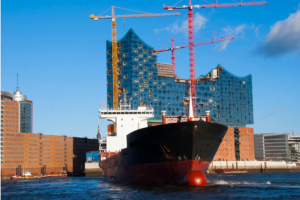Archer Materials (ASX:AXE): There’s more to the company than many investors think

Archer Materials (ASX:AXE) has long attracted intrigue as the only ASX company in quantum computing, although there is far more to the company than that. In the past couple of years, it has been working on a second technology (Biochip) that could come to market sooner than its quantum computing chip 12CQ.
Significant progress has been made in CY24 in respect of both technologies and a new report from Pitt Street Research (our parent company) has outlined how far it has come, and what the rest of the calendar year might hold.
Introduction to Archer Materials and its technologies
Archer has two technologies – 12CQ and Biochip.
12CQ
The first of Archer’s technologies is 12CQ, a carbon-based quantum bit (qubit) semiconductor technology. Once fully developed, the technology may potentially enable quantum devices that process quantum information in mobile technology and be accessible to a more broader population than today.
Quantum computers use the laws of quantum mechanics, and utilise qubits rather than ordinary ‘bits’ (units of information used by computers that can store and process information). Quantum computing have a larger processing capacity and hence have potential to make calculations much faster than regular computers.
Today’s quantum computing devices are not accessible to a broader population because they can only work at sub-zero temperatures and tend to be large, impractical and expensive. But Archer’s 12CQ could pave the way for mobile quantum computing-powered devices. It comprises of:
-
- A carbon nanosphere adapted to store a qubit represented by an electronic spin, and
- Readout and control devices to set the qubit and read the value stored on the carbon nanosphere.
Qubits stored on carbon nanospheres have a greater coherence at room temperature and don’t require near-absolute zero operating temperatures to prolong coherence. Additionally, the value of carbon-based qubits could potentially be controlled and be read without having to apply “tricks” to lengthen read times, although colder temperatures will lengthen spin lifetime.
Those interested in how exactly 12CQ works should read Pitt Street Research’s reports but qubits stored on carbon nanospheres would have a greater coherence at room temperature, and crucially could be controlled and read easier than with today’s devices.
There has been hype about quantum computing given substantial government funding and the perceived potential for quantum computing to make a difference in the world. However, very few (if any) companies, are working on technology like this, let alone have such extensive patent protection.
Although commercialisation of 12CQ is realistically 5-7 years away, there are development milestones to be achieved before then that could be accretive to shareholder value for Archer investors. Biochip, meanwhile, could be commercialised earlier.
Biochip
Archer’s Biochip is a Lab-on-a-Chip technology being developed to enable rapid, parallelised detection of diseases. It would allow droplets of biological specimens to be analysed and processed using graphene sensors. It does so by using graphene field effect transistors (gFETs), allowing an ultrasensitive approach to detection compared to conventional sensors used in current Lab-on-a-Chip devices and other electronic devices.
Once again, investors interested in a more detailed explanation on how Biochip works should view our reports. For now, it suffices to outline why it would be a big deal. Namely, because it could generate faster and more reliable results than competing technology and (crucially) on device. It does not require extensive training and could be performed at room temperature.
Archer is at an early stage with the Biochip, but made substantial progress in CY23, having taken the gFET technology from concept to design and through successful early-stage commercial testing at semiconductor foundries. It unveiled the first-generation hardware and software in the system platform, which was designed to run using a chip with single isolated gFETs as sensors, allowing for an ultrasensitive approach to analyte detection over conventional electronic sensors used in current lab-on-a-chip devices. It unveiled a proof-of-concept biosensing graphene transistor in July 2023 and then began working with a commercial foundry partner in the Netherlands for a whole four-inch wafer run validation.
A big 2024 so far
During March 2024, Archer accomplished two major feats.
Biochip miniaturised
First, it designed a miniaturised version of Biochip for a fabrication at a commercial foundry – from 10mm to 1.5mm. This design was achieved by Archer personnel redesigning the layout of the circuits creating the gFET transistors.
This new design has been sent to a foundry partner – Netherlands-based fab Applied Nanolayers (ANL) – for a whole-wafer fabrication of reduced-size gFET chips. It will be tested on a four-inch wafer, which is expected to produce 1375 chips on it, compared to the 45 chips produced using earlier designs in previous four-inch wafer fabrication runs. The wafer will be diced and assembled at Archer’s outsourced semiconductor assembly and testing partner, AOI Electronics in Japan. Delivery of the packaged chips is anticipated in mid-2024.
This is big because it demonstrates Archer’s expertise, in being able to scale down chips so substantially while not just maintaining but enhancing performance – something that is not easy to do in a non-cost-prohibitive way. Second, it broadens the Biochip’s potential reach and ultimate commercial lifespan. If the Biochip is successfully commercialised, it could enable the ability to parallelise the detection of biologically relevant targets on a chip – in other words, to detect multiple targets at once rather than one at a time.
A new p-ESR chip developed
The second achievement Archer accomplished was developing a pulsed electron spin resonance (p-ESR) spectrometer on chip with its research partner EPFL (École Polytechnique Fédérale de Lausanne) based in Switzerland. Archer intends to use the p-ESR microsystem to perform complex measurements involving the potential electron spin manipulation of Archer’s 12CQ quantum materials.
The p-ESR microsystem is a tiny, integrated device designed to detect and analyse the behaviour of unpaired electrons, that potentially carry spin quantum information, in materials at a small scale. It measures 0.7 mm in size and consists of several components that work together to detect and amplify signals related to the behaviour of unpaired electrons. This device can precisely and accurately measure ESR parameters such as spin-spin relaxation time and spin-lattice relaxation time. These are important parameters for determining the time-window for processing electron spin information in solid-state quantum electronic devices. Crucially, it can be done with low power consumption (<100mW of power), with very small numbers of electron spins and a wide radio frequency.
For Archer, this feat gives the company room to explore possible nearer term applications and products with more mature markets (e.g. industrials). For markets it is already targeting, it could potentially help it avoid biological regulatory approvals for precision sensing. The p-ESR chip has the potential to be a standalone product with further engineering, for instance, to include the microwave source on the chip and other modifications to the magnets. Whether or not it is a standalone product, it is playing, and will continue to play, an important role in driving the 12CQ quantum chip development.
The measurements will continue throughout the rest of CY24 and will enable Archer Materials to explore future opportunities this chip could present. These could include radiofrequency circuits for potential applications in quantum technology. There may not be an immediate financial impact on Archer, although in the longer-term, it could make 12CQ an even more lucrative prospect than it already is.
Archer has scope to create significant shareholder value
Investors have taken well to Archer’s accomplishments, sending shares up over 30% in CY24.

Archer Materials (ASX:AXE) share price chart, log scale (Source: TradingView)
Pitt Street Research believes there is further scope for the creation of shareholder value. While its reports have not put a formal value on Archer Materials, it argued there was potential for the company to rerate to A$0.60-$1.00 in the medium term. This was observing its peers in the semiconductor technology sector. Although Archer is undeniably behind Weebit Nano (ASX:WBT) and BrainChip (ASX:BRN) that trade at equity values above A$600m, it could be argued that it is at a similar stage to 4DS Memory (ASX:4DS) and Audio Pixels (ASX:AKP) that trade at slight premiums.
Obviously, this could be contingent on the company continuing to achieve development milestones without significant delays. A future expansion of the company’s portfolio and partnerships with leading technology and life sciences technologies could help as well.
Conclusion
Pitt Street Research’s report on Archer outlines a company with exciting future prospects. There is no other company on the ASX that is working on the kinds of technologies Archer is working on, and very few (if any) on the Planet. Even if commercialisation is a few years away, the continued development of these products should lead to the creation of substantial shareholder value in the future.
What are the Best ASX Stocks to invest in right now?
Check our buy/sell tips
Blog Categories
Get Our Top 5 ASX Stocks for FY26
Recent Posts
TechnologyOne (ASX: TNE) Wins $54.7M Legal Battle: Is the 34% Dip Now a Buying Opportunity?
TechnologyOne (ASX: TNE) has finally put one of Australia’s longest-running employment disputes behind it. The Federal Court threw out a…
Austal (ASX: ASB) Secures A$1bn Defence Win: A Defensive Buy at 28x Earnings?
Austal (ASX: ASB) locked in more than A$1.16 billion in new contracts last week, cementing its position as Australia’s go-to…
Develop Global Wins $200m OceanaGold Contract- What It Means for Investors
Develop Global (ASX: DVP) climbed 4% to A$4.36 on Friday after securing a A$200 million underground development contract with global…



